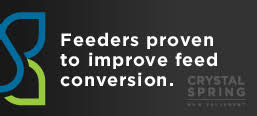Just after The Canada-West Swine Health Intelligence Network reported on Erysipelas, Rotavirus, Greasy Pig, and Influenza as the main diseases identified by swine veterinarians during the first quarter of 2018, Manitoba confirmed a new case of PEDv on May 15, 2018, in a finisher barn in Southeastern Manitoba. Biocontainment on this site is in place.
The CWSHIN said to keep on top of emerging swine health issues the Canada-West Swine Health Intelligence Network collects swine health information from swine veterinarians in western Canada and reports that information back to veterinarians and producers.
CWSHIN Manager Dr. Jette Christensen said they completed the first quarter report for 2018. In the last issue, the Voice reported the lessons learned from the 2017 PEDv outbreak with the first confirmed case at the end of April 2017 and moving forward.
In announcing the latest outbreak on May 15 Manitoba Pork and the Chief Veterinary Office strongly recommended everyone in the industry take enhanced biosecurity steps on all premises. This boundary includes the area bounded on the west by PTH 75, north by PR 210, east by PTH 12, and south by PTH 52 (and mile road 36N that continues west from the 52 to the 200 and the Red River).
“This recommendation is meant to encompass areas impacted by PED in May and June of the last three years and provide easily recognizable boundaries for all involved,” said Manitoba Pork. “Consult your veterinarian on enhanced biosecurity protocols that you implement on your premises.”
In 2017’s outbreak, there are currently 68 premises that have reached Presumptive Negative status, 11 Transitional premises and one Positive site remaining.
“We encourage all Manitoba producers to sign on to the password protected Manitoba Coordinated Disease Response (MCDR) online, to access detailed information regarding statuses and locations of affected premises. To arrange to sign a producer confidentiality/information sharing agreement to access MCDR, or for other assistance, contact Jenelle Hamblin, Manager of Swine Health, at jhamblin@manitobapork.com or 204-235-4442.
“In the first quarter it’s noticeable that Erysipelas is always out there in the background but, when farms quit vaccinating, it seems that the clinical signs start to flare up again so we are noticing that,” said Dr. Christensen.
“Being the first quarter of the year, many cold weeks and that might have triggered or affected the occurrence of Rotavirus and Greasy Pig; both diseases saw a slight increase in the reporting of them.
Dr. Christensen said practitioners saw an increase in the occurrence of Influenza and, at the same time, the laboratories said there is a slight shift in the strains they diagnosed.
“Now the pandemic H1N1 seems to be popping up a little bit more again, but the source of this pandemic H1N1 is uncertain,” she said. “We cannot say for sure where it comes from.”
Dr. Christensen said certain strains of Influenza spread more easily than others and some strains spread more easily from people to pigs and from pigs to people.
“I encourage the vaccination of swine barn workers at the start of flu season, and any swine barn workers with any flu-like symptoms should refrain from going into swine barns.”
In light of disease outbreaks, there are federal livestock traceability requirements on the horizon to assure those who work to control and help eradicate the diseases and for assurance to customers.
Livestock traceability has three foundational pillars, identification of locations, animal identification; and reporting movements of animals from one place to another. Pigs are the only species group that currently fulfills all three pillars at a national level through the PigTRACE Canada program, mandatory under federal regulations since July 1, 2014.
Those same regulations (Part XV of the federal Health of Animals Regulations) are edging closer to requiring all three traceability pillars for bison, cattle, farmed deer, goats, and sheep. Some of those species have had long-standing requirements for animal identification. Movement reporting requirements will be new additions to those sectors.
Manitoba Pork said consultations between livestock groups and the Canadian Food Inspection Agency (CFIA) in 2013 and again in 2015 have attempted to outline the design of the requirements.
“CFIA has summarized the feedback and worked internally within the Canadian government to draft proposed regulatory changes for a public comment period of 75 days. The proposed regulatory changes will be available in Canada Gazette 1, perhaps as early as June 2018.” •
— By Harry Siemens





